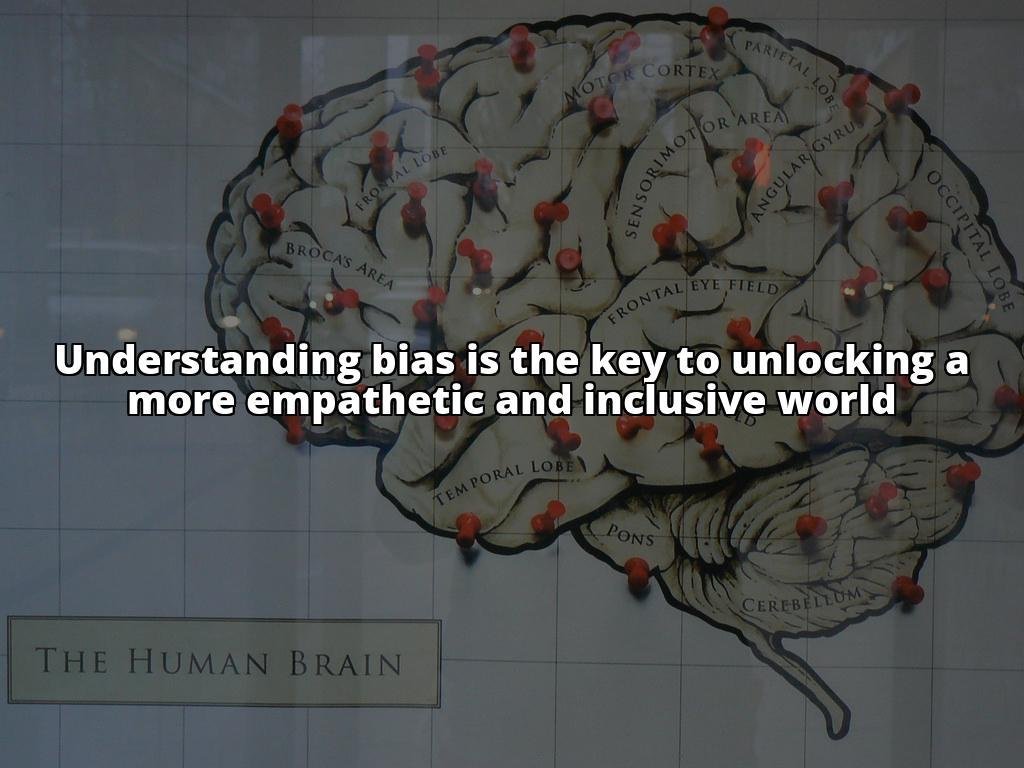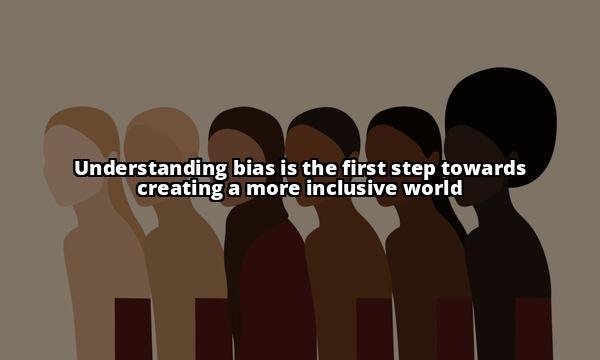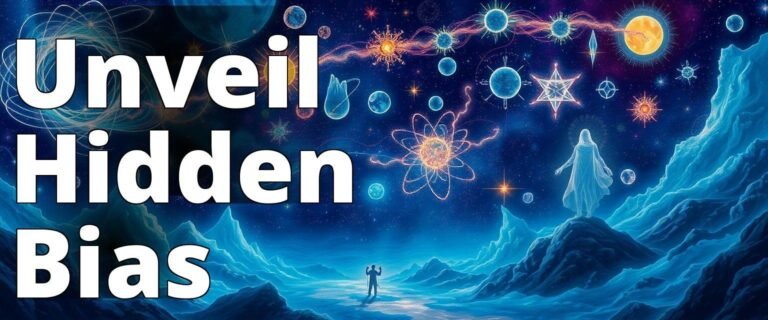What Is Bias?
Have you ever wondered why we favor some things, ideas, or people over others without any rational explanation? Welcome to the intricate world of bias, a psychological phenomenon that shapes our views, decisions, and interactions in more ways than we might realize. This exploration into the psychology of bias will not just skim the surface. Instead, it aims to delve deep, offering a comprehensive understanding of how biases form, operate, and impact our lives, backed by studies and peppered with personal anecdotes to bring the discussion to life.
Learn about the psychology of bias
- Understanding Bias: Bias is a systematic pattern of deviation from norm or rationality.
- Types of Bias: Includes unconscious bias, confirmation bias, in-group bias, out-group homogeneity bias, and self-serving bias.
- Reducing Bias: Strategies to reduce bias include increasing awareness, promoting diversity, and challenging stereotypes.
What Is Bias?
At its core, bias is a predisposition, often in a direction that is considered to be unfair or dismissive of alternative considerations. It’s a lens through which we view the world, not always based on fact or rationale but deeply ingrained within our psyche. Bias influences the judgments we make, the interactions we have, and even the way we perceive reality.
Key Takeaways
- Bias is an inherent part of human cognition, affecting decision-making and perception.
- Understanding different types of biases can help us recognize and mitigate their impacts.
- Biases are not only personal but can also be culturally and socially influenced.
Understanding Bias
Types of Bias
Biases come in various forms, each with its unique influence on our thoughts and actions. Let’s explore some of the most prevalent types:
Confirmation Bias
This is our tendency to search for, interpret, and remember information in a way that confirms our preconceptions. For example, if I believe that left-handed people are more creative, I’m more likely to notice and remember instances that support this belief, ignoring evidence to the contrary.

Unconscious Bias
These biases operate below the radar of conscious thought, affecting our judgments and behaviors without us even realizing it. From preferring someone who shares our nationality to making snap judgments based on appearance, unconscious biases are pervasive and often challenging to identify and overcome.
To understand unconscious bias, consider how you might instantly trust someone because they remind you of a friend, despite knowing nothing about their character.
How Bias Works
In-Group Bias
Humans have a natural tendency to favor those who belong to their group, whether defined by race, religion, gender, or even sports team affiliations. This bias can lead to preferential treatment for in-group members and discrimination against others.
An example of in-group bias is cheering loudly for your country’s team during the Olympics, feeling a sense of pride in their achievements as if they were your own.
Out-Group Homogeneity Bias
This bias makes us see members of an out-group as more similar to each other than they really are, often underestimating the diversity within that group. For instance, assuming all members of a political party share the exact beliefs and values.

Self-Serving Bias
Here, individuals attribute positive outcomes to their own actions and negative outcomes to external factors. For example, if I win a game, I might credit my skill, but if I lose, I blame the weather or bad luck.
Why the Brain Needs Bias
Believe it or not, biases aren’t just flaws in our thinking; they serve an essential purpose. The human brain is bombarded with information, and biases help filter this data, allowing us to make quick decisions without being paralyzed by analysis. However, the downside is that these shortcuts can lead to errors in judgment and perpetuate stereotypes.
How Bias Opinions Impact Every Aspect of Our Lives
Biases shape our views on politics, religion, relationships, and even what products we buy. They influence how teachers grade students, how employers review job applicants, and how we interact with strangers. The impact is profound and pervasive, touching every corner of society.
Why the Brain Is Difficult to Change Once We Decide to Believe in Something
Our beliefs are tied to our identity, making them incredibly resistant to change. When confronted with evidence that contradicts our views, we may experience cognitive dissonance, an uncomfortable tension between what we believe and the new information. To resolve this discomfort, the brain often rejects the new evidence, clinging even tighter to the original belief.
Reducing Bias
While it’s impossible to eliminate bias entirely, we can take steps to mitigate its impact:
- Awareness: Recognizing our biases is the first step toward change.
- Seeking Contrary Evidence: Actively looking for information that challenges our preconceptions can help balance our views.
- Diverse Experiences: Engaging with people and ideas outside our usual circles can broaden our perspectives.
A Word From Verywell
Understanding and addressing our biases is not just an exercise in self-improvement; it’s a crucial step toward creating a more just and equitable society. By confronting our biases, we can make more informed decisions, build better relationships, and foster a more inclusive world for everyone.
Conclusion
The psychology of bias is a complex and multifaceted field, revealing much about the intricacies of human thought and behavior. While biases are a natural part of human cognition, their impact on our lives and society can be profound. By striving to understand and mitigate our biases, we can improve not only our own lives but also the communities and societies we are part of. In a world increasingly divided by polarized opinions and entrenched beliefs, the effort to bridge these divides through understanding and addressing our biases has never been more important.
The journey toward overcoming bias is ongoing and requires patience, persistence, and a willingness to challenge ourselves. But the rewards greater empathy, understanding, and connection are well worth the effort.
Frequently Asked Questions
Question: What is the psychology of bias?
Answer: The psychology of bias studies how our preconceptions influence our thoughts, feelings, and behaviors.
Question: How can biases affect decision-making?
Answer: Biases can lead to distorted judgments and decisions based on stereotypes, leading to unfair conclusions.
Question: Who studies the psychology of bias?
Answer: Psychologists and researchers delve into the psychology of bias to understand its impact on individuals and society.
Question: What can be done to reduce biases?
Answer: Awareness, education, and exposure to diverse perspectives can help reduce biases and promote more objective thinking.
Question: How do biases develop in individuals?
Answer: Biases can develop through socialization, personal experiences, media influence, and cultural norms shaping our perceptions.
Question: Isn’t bias a natural human trait?
Answer: While bias can be innate, acknowledging and actively working to mitigate biases can lead to more fair and inclusive behaviors.







